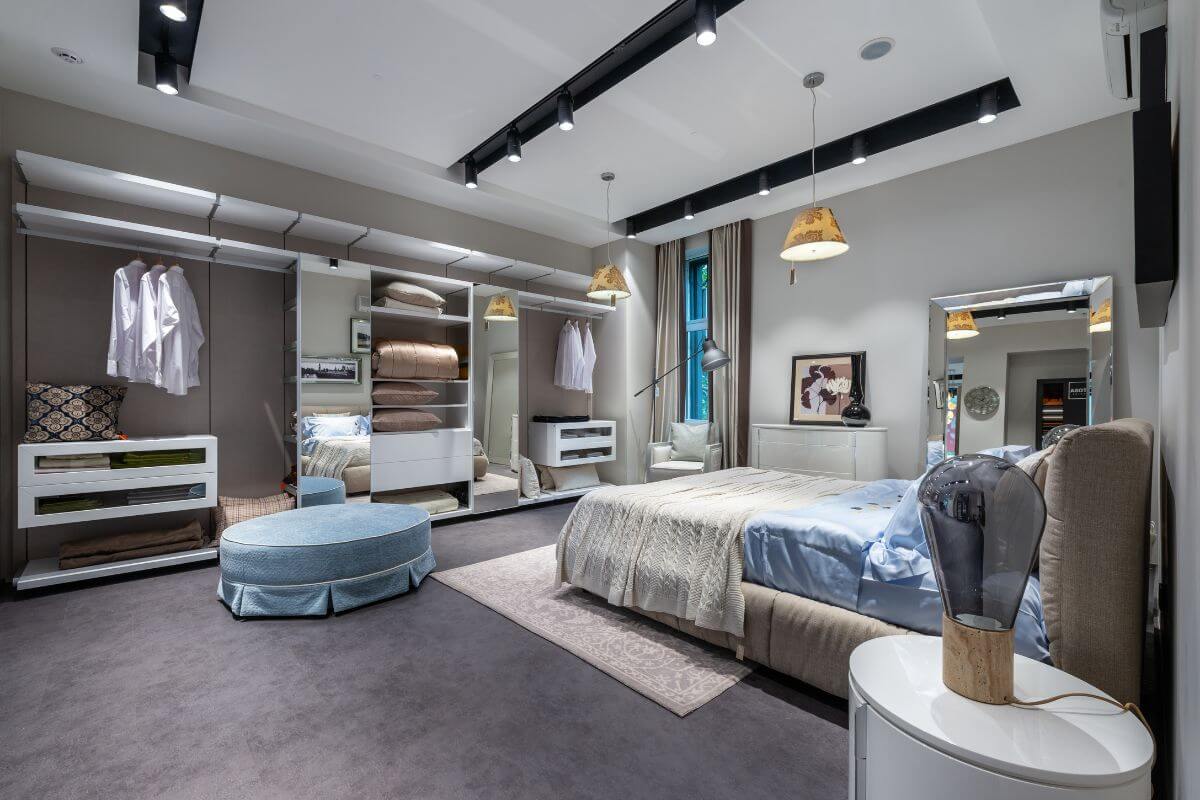When it comes to interior design, paint color plays a crucial role in setting the tone and ambiance of a space. Two popular paint options that have gained traction in recent times are Seapearl and Classic Gray. These versatile and elegant shades offer distinct aesthetics, making them favorites among homeowners and designers. In this article, we’ll compare Seapearl and Classic Gray to help you decide which color is the best fit for your home.
1. Introduction
Selecting the right paint color is an exciting yet important decision in interior design. Seapearl and Classic Gray are two hues that have gained popularity for their timeless appeal and adaptability. Let’s delve into the characteristics of each color to help you make an informed choice for your living space.
2. Exploring Seapearl
Seapearl is a soft and elegant shade that falls within the off-white spectrum. It exudes a sense of calm and tranquility, making it a popular choice for bedrooms, living rooms, and bathrooms. Seapearl’s subtle undertones create a warm and inviting ambiance, making it an excellent option for both traditional and contemporary interiors.
3. Discovering Classic Gray
Classic Gray, as the name suggests, is a timeless and versatile neutral tone. It strikes a balance between gray and beige, resulting in a soft and sophisticated look. This color complements a wide range of decor styles and can serve as a backdrop for various design elements. Classic Gray is known for its ability to adapt to different lighting conditions, making it a reliable choice for any room in the house.
4. Color Undertones and Effects
H2: Color Undertones and Effects
Seapearl carries subtle yellow undertones that impart a cozy and welcoming feel to a room. This undertone can create a sense of intimacy, making it an ideal choice for spaces where comfort and relaxation are key.
Classic Gray’s balanced mixture of gray and beige ensures a neutral base that complements a variety of color schemes. Its versatility allows it to harmonize with both warm and cool tones, giving you the freedom to experiment with different decor elements.
5. Light and Space Considerations
Seapearl tends to work well in rooms that receive ample natural light, as it can enhance its warmth and prevent it from appearing too yellow. In spaces with limited light, Seapearl may appear slightly darker.
Classic Gray’s adaptability shines in various lighting conditions. It remains consistent and maintains its soft appearance whether in bright sunlight or subtle indoor lighting.
6. Complementary Colors and Accents
Seapearl pairs beautifully with earthy tones like olive green, terracotta, and rich browns. These combinations create a cozy and harmonious atmosphere. Crisp white accents can also provide a clean contrast against Seapearl’s softness.
Classic Gray serves as an excellent backdrop for both bold and subtle accents. It complements navy blues, dusty pinks, and vibrant yellows equally well. This versatility allows you to experiment with various color palettes to achieve the desired effect.
7. Mood and Atmosphere
Seapearl evokes a sense of serenity and relaxation, making it suitable for creating tranquil spaces such as bedrooms and reading nooks. Its warm undertones contribute to a cozy and inviting atmosphere.
Classic Gray exudes sophistication and timelessness, making it an ideal choice for living rooms and dining areas where you want to create an elegant and welcoming setting.
8. Popular Use Cases
Seapearl’s inviting nature makes it a popular choice for bedrooms, bathrooms, and cozy sitting areas. It can also be used as a calming backdrop in home offices or creative studios.
Classic Gray’s versatility shines in open-concept living spaces, kitchens, and hallways. Its adaptability allows it to seamlessly connect different areas of the home.
9. Making Your Choice
Selecting between Seapearl and Classic Gray depends on the mood and atmosphere you want to create. Consider the lighting conditions, existing decor, and the overall aesthetic you envision for your home. Samples and swatches can help you visualize how each color will look in your space.

10. Conclusion
In the world of interior design, the choice between Seapearl and Classic Gray is a matter of personal preference and the ambiance you want to achieve. Both colors offer distinct qualities that can enhance the beauty and comfort of your living space, making it a delightful process to select the perfect shade.
FAQs
Can Seapearl be used in a contemporary minimalist design?
Yes, Seapearl’s warm undertones can add a touch of coziness to modern minimalist interiors.
Does Classic Gray work well with metallic accents?
Absolutely, Classic Gray’s neutral base complements metallic finishes like brushed nickel and gold.
Can I use Seapearl and Classic Gray in the same room?
Yes, these colors can be combined for a subtle and harmonious color palette.
Will Classic Gray make a small room appear larger?
Classic Gray’s neutral nature can create the illusion of space, making it suitable for smaller rooms.
Is it advisable to use Seapearl in a basement with limited natural light?
In spaces with minimal light, Seapearl’s warmth might be subdued, so consider using it in conjunction with adequate lighting.
In conclusion, the decision between Seapearl and Classic Gray comes down to your desired ambiance and design preferences. Whether you’re seeking a cozy and inviting feel with Seapearl or a versatile and timeless backdrop with Classic Gray, both colors have the power to transform your home into a welcoming and stylish haven.



